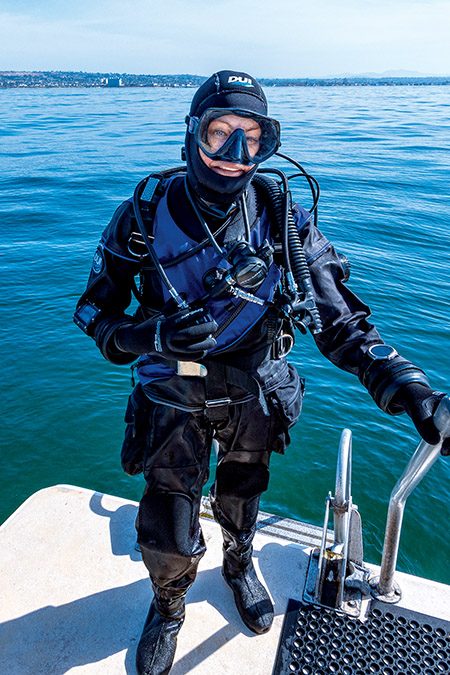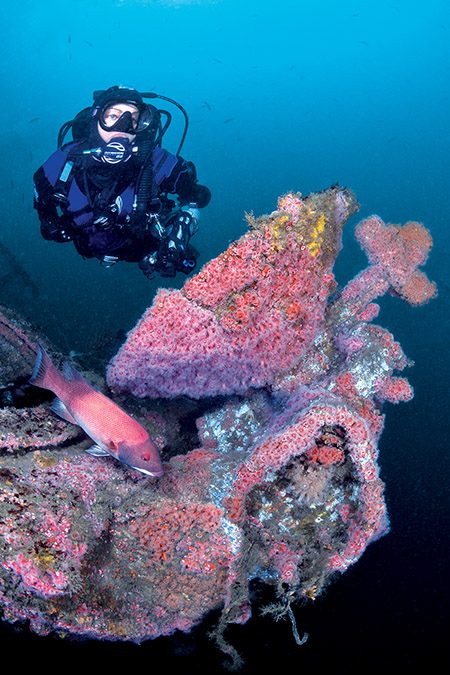A skin bends mystery
After getting my dive certification in 1992, I was instantaneously addicted. Being young, obsessed, and convinced of my immortality, I was not the most conservative diver, but I had no issues with decompression sickness (DCS) for my first decade of diving. I battled breast cancer between 2003 and 2006; after my treatment (chemotherapy and four surgical procedures), I became far less of a daredevil.
I was every bit as addicted to diving, however, and when I had my first experience with skin bends (cutaneous DCS) in 2008, I was diving multiple times per week in San Diego, California. My first hit — an itchy patch on my abdomen — happened on a liveaboard after my fourth dive of the day. My hit seemed more unlucky than unlikely; I was diving a conservative profile and had cleared my decompression obligations. But it wasn’t a fluke.
I experienced skin bends — the same presentation in the same location on my abdomen and, curiously, always after diving in a drysuit — several more times during 2008, even following extremely conservative profiles. After multiple DAN calls and medical consultations, I was no closer to understanding why this was happening.


Due to the timeline, presentation of my symptoms, and the types of diving I was pursuing, physicians suspected that my propensity to develop skin bends was associated with my cancer-related surgical history and associated scar tissue rather than a cardiac defect, such as a patent foramen ovale (PFO). The consensus was that an echocardiogram was unlikely to uncover a cardiac issue, so it wasn’t urgent to pursue testing. I felt reassured and was becoming adept at preventing skin bends through a blend of nitrox use, extremely conservative profiles, avoidance of drysuit squeeze, and extended safety stops, so I didn’t bother to get tested.
Over the subsequent 15 years, I uncommonly experienced skin bends, probably because I spent more than my fair share of time performing long safety stops out of caution. Then a friend who had been diving with a large PFO for years suffered a devastating stroke (PFO is thought to be a risk factor for ischemic stroke). Shaken, I finally reached out to my friend Dr. Douglas Ebersole for advice. After a lengthy discussion and the extraction of a promise from Dr. Ebersole to act as my surgeon if needed, I was ready to move forward with testing.
I contacted the hyperbaric department at the University of California San Diego, knowing what to expect because the procedure had been recently described in “The Possibility of a PFO” (Third Quarter 2023 Alert Diver). Three months later, I watched nervously as my ultrasound specialist performed a transthoracic ultrasound with a bubble study, trying earnestly to impress him with my Valsalva technique (intended to increase the test’s sensitivity for PFO detection). My results arrived days afterward: They were perfectly normal, with no evidence of intracardiac shunt.
I was flooded with a mixture of emotions. I felt relief, of course, knowing I didn’t need to consider surgical closure of a cardiac defect. But I also felt a little frustration, knowing that there was nothing I could just fix. If I wish to avoid that itchy patch of skin bends, I will always have to dive conservatively.
Regardless, I’m grateful to have an answer to the question that has always been in the back of my mind. I suppose more obligatory time spent hovering in shallow water is not the worst penalty after all.
© Alert Diver — Q2 2024